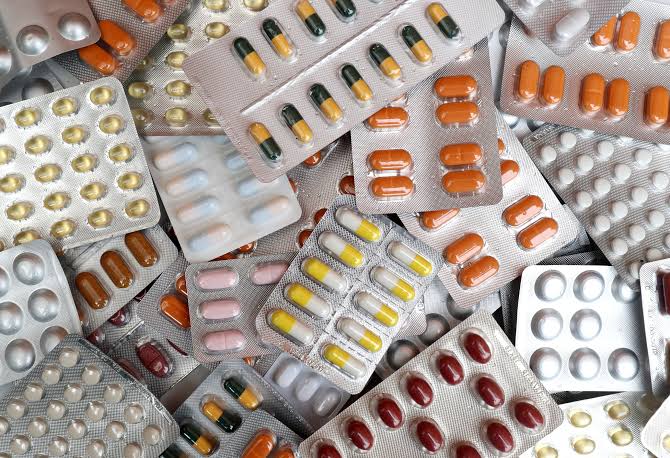
Addressing Nigeria’s Counterfeit Drug Crisis
By Arafat A. Abdulrazaq,
The resurgence of counterfeit drugs in Nigeria is not just a health crisis; it is a national emergency. Despite past victories in combating the illicit drug trade, fake medicines have increasingly infiltrated pharmacies, markets, and even hospitals, endangering lives and eroding public trust in the healthcare system.
According to PubMed Central, over 70% of drugs in Nigeria are imported, primarily from countries like India and China—both significant sources of counterfeit medicines. These fake drugs are no longer confined to open drug markets or backstreet vendors; they have now permeated mainstream supply chains.
From essential antibiotics to life-saving cancer treatments, no category of medication is immune. Meanwhile, local production has surged, with underground operations churning out substandard drugs disguised as reputable brands.
Corruption at ports and weak international trade enforcement further enable this influx, compounding the challenge. Recently, the National Agency for Food and Drug Administration and Control (NAFDAC) destroyed counterfeit drugs worth ₦100 billion at the Moniya dump site in Akinyele Local Government Area of Oyo State.
Seized from pharmaceutical marketers at Lagos’s Idumota market, these fake medicines represent only a fraction of the illicit trade. The consequences are dire. Patients unknowingly consume these dangerous products, which are often ineffective or toxic.
This has led to numerous deaths from treatable diseases like malaria and typhoid, as inactive or harmful medications fail to deliver the intended cure. Beyond the human toll, the economic impact is substantial. The pharmaceutical industry loses billions of naira annually to counterfeit trade, discouraging investment in local drug manufacturing.
More critically, the credibility of Nigeria’s healthcare system is at stake, as public confidence continues to wane. Agencies like NAFDAC have had notable successes in the past. Dr. Dora Akunyili, one of Nigeria’s most celebrated public servants, served as NAFDAC’s Director-General from 2001 to 2008.
During her tenure, she reduced the circulation of counterfeit drugs from 60% to 16%. Her approach was both strategic and aggressive: she launched a nationwide crackdown on counterfeit drug manufacturers and distributors, collaborating with local and international law enforcement to dismantle supply chains and prosecute offenders.
Under her leadership, NAFDAC destroyed large quantities of fake drugs, shut down illegal manufacturing plants, and tightened regulatory oversight at ports and border crossings. Dr. Akunyili’s crusade came at a personal cost. Her unwavering commitment made her a target of threats and assassination attempts by powerful figures within counterfeit drug networks.
Today, the current Director-General, Prof. Mojisola Adeyeye, faces similar challenges. In a recent interview, she lamented the personal toll of the job, revealing that she now requires round-the-clock police protection. She also disclosed that heightened enforcement by NAFDAC recently led to the seizure of 87 truckloads of substandard and expired medical products, including antiretroviral drugs, condoms, and other compromised supplies.
This crackdown, conducted at major drug markets in Lagos, Onitsha, and Aba, resulted in the confiscation of fake drugs valued at over ₦1 trillion—the largest seizure in the agency’s history. Some argue that counterfeiters exploit the system due to inadequate regulatory frameworks and weak enforcement mechanisms.
In an address to the National Assembly, Prof. Adeyeye called for urgent amendments to the NAFDAC Act N1 LFN and the Counterfeit and Fake Drugs and Unwholesome Processed Foods C34 Act, proposing life imprisonment and even the death penalty as punishments for offenders.
Counterfeiters also take advantage of technological gaps. Although NAFDAC introduced measures like the Mobile Authentication Service (MAS), which allows consumers to verify drugs via SMS codes, many fake drugs now feature sophisticated packaging and holograms, making them nearly indistinguishable from genuine products.
The battle hinges on who can better leverage the latest technology and act more swiftly. In an interview with The Punch, NAFDAC officials highlighted inadequate staffing and poor funding as major constraints. “One of the basic things needed for effective enforcement is logistics. We need a lot of vehicles—utility vehicles, a truck on standby—so that once we seize products, we do not have to hire trucks,” one official said.
He further noted that a lack of funding was affecting the agency’s efficiency. “For our recent operation, almost all available staff had to be mobilized, leaving other areas neglected.” Earlier in January, Prof. Adeyeye reiterated that NAFDAC was severely understaffed.
She stated, “Based on our population, we should have at least 10,000 staff. Right now, we have about 2,000. We burn candles at both ends and overstretch ourselves because we must safeguard the health of Nigerians. We are not asking for 10,000 staff immediately; we are just asking for double or triple what we currently have.”
The resurgence of counterfeit drugs in Nigeria is a ticking time bomb, threatening the health and safety of millions. While NAFDAC’s efforts are commendable, the fight against these “merchants of death” requires a united front. Government agencies, pharmaceutical companies, healthcare professionals, and the public must all play a role in eradicating this menace.
Until then, counterfeit drugs will remain a silent killer, lurking in pharmacies and drug stores, waiting to claim more innocent lives.
Arafat A. Abdulrazaq is a corps member at the Center for Crisis Communication and can be reached at: [email protected]
